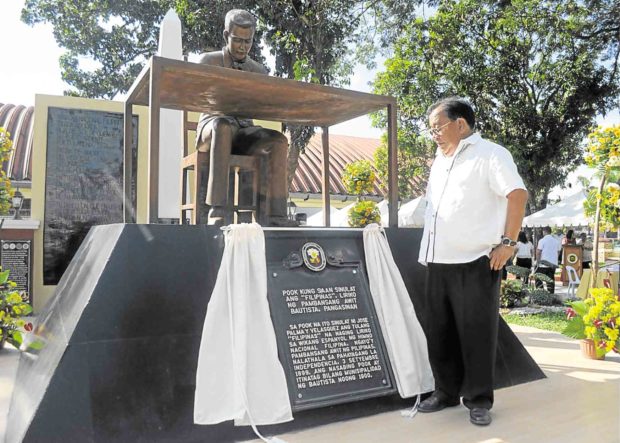
Through this shrine, Bautista town is recognized for its role in the country’s freedom. —GABRIEL CARDINOZA
BAUTISTA, PANGASINAN—A historical shrine honoring the town where the lyrics of the national anthem “Lupang Hinirang” was written, was unveiled with a historical marker on Monday by Mayor Amadeo Espino and Ludovico Badoy, executive director of the National Historical Commission of the Philippines (NHCP).
The shrine features a statue of poet Jose Palma writing the lyrics of the national anthem on a desk.
But the shrine was built in the town plaza, not in the vicinity of Casa Hacienda, the house where Palma supposedly stayed in 1899, when he came to Pangasinan province following his release from prison.
While here, Palma wrote the poem “Filipinas,” which was published in the first anniversary issue of La Independencia on Sept. 3, 1899.
The poem would become the lyrics of what was originally the “Marcha Nacional Filipina,” a hymn composed by Julian Felipe that was played by the San Francisco de Malabon band during the proclamation of Philippine independence in Kawit town in Cavite province on June 12, 1898.
“The original plan was to build the shrine at the site. We have been talking with the son of the property owner. But the process is quite long. The property has not been subdivided yet,” Espino said.
The shrine consists of a
2.7-meter-tall obelisk and vertical panels on both sides, where the Spanish and Filipino lyrics of the national anthem are inscribed.
In front of the panel is an elevated platform, where Palma’s statue is seated. A brass marker from the NHCP is posted in front of the platform.
Espino said the NHCP had committed to study if it could preserve Casa Hacienda, which a local historian had described as a historic house. —GABRIEL CARDINOZA